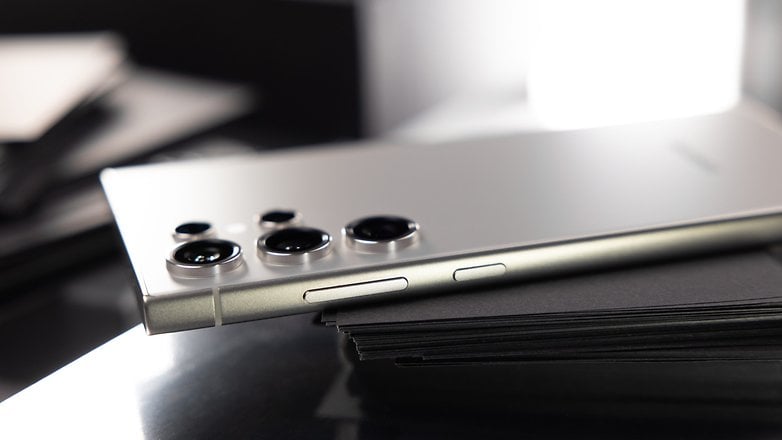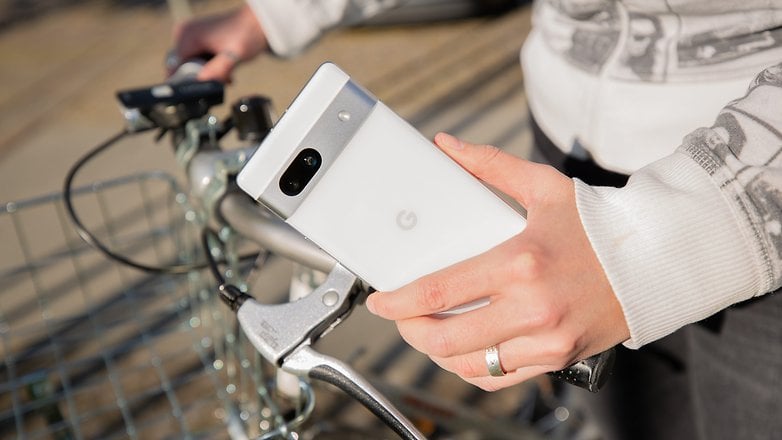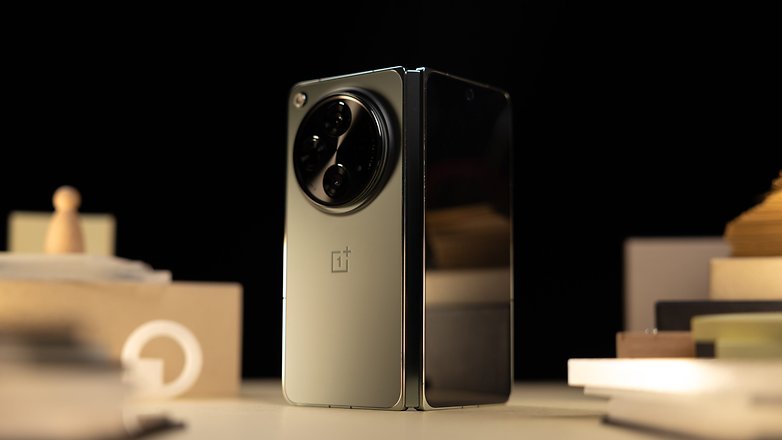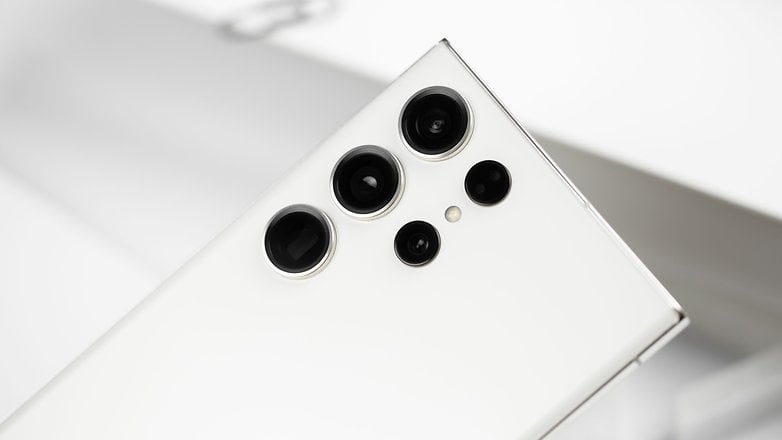nextpit recommends: These are the best artphones in 2024motorola手机「nextpit recommends: These are the best artphones in 2024」
When you choose a high-end artphone, you can usually be sure that you'll get the best screen, the best performance, or even the best camera. In the last few years, high-end artphones have grown more and more into luxury devices, be it in terms of design, internal components, or the increasingly higher price.
Speaking of it: The foldable phones, which tend to be high-priced, are becoming more and more popular, which is why we now also list two different categories in the best list: One for the flip phones in the compact form factor and the other for the larger models in the "butterfly" format.
For this buying guide, we have divided artphones into different categories to accommodate different budgets and types of use. For example, you will not find the latest 200 MP image sensor or the most powerful SoC in a mid-range artphone. That's why we have picked out some of the most important features that you should consider when buying a artphone.
Want to know more about the different artphones? In the following paragraphs, we briefly present our favorites and go into the advantages and disadvantages. Because depending on the user type, a different artphone is the perfect choice.

The king is dead, long live the king—that's the motto for the best artphone of the still young year. Last year's S23 Ultra from Samsung's flagship series is now being replaced by the Galaxy S24 Ultra. Currently, this is perhaps the best artphone ever, but in our opinion, it is at least the best artphone with Android.
Hardly anything has changed on the outside. The design is almost identical, but Samsung now uses titanium for the frame, just like its compe Apple. The comparison between the Galaxy S24 Ultra and S23 Ultra doesn't reveal many other differences at first glance. But don't let the almost identical spec sheet put you off!
The 6.8-inch LTPO OLED display appears unchanged at first glance but shines even brighter than its predecessor. This top artphone is now powered by the Snapdragon 8 Gen 3 and the operating system is the new One UI 6 interface based on Android 14.
The absolute cracker: Samsung promises us a whopping seven years of Android and security updates! Thanks to Galaxy AI, artificial intelligence is supposed to give the Galaxy S24 Ultra an extra boost, but our tester Antoine is not yet completely convinced.
The camera setup also looks almost unchanged, although the telephoto camera with 10x optical zoom has been replaced by a camera with 5x zoom, which now boasts 50 MP.
The battery life is also absolutely convincing, as the benchmark test attests the S24 Ultra an outstanding 19 hours. We'll keep quiet about the fact that it still only charges at 45 W and that this charger is not included in the box.
If you want to secure this top-of-the-range box, you will have to pay at least $1300. But for that you also get the best that is currently available in the Android camp.
Phone design has pretty much settled in the past 8 years since the launch of the iPhone X (or the Essential Phone if you are a artphone database). To distinguish the 2024 iPhone 16 Pro from its predecessors, Apple added a multi-function button, the Camera Control, that serves as a shortcut not only for the camera app but also to the app's settings. Opinions on its usefulness vary wildly, but at least Apple is trying.
The other new feature for the iPhone 16 range is "Apple Intelligence" a suite of AI features that are gradually rolling out. But those are also available on the 15 Pro phones. Buzzwords aside, the iPhone 16 Pro also comes with a more efficient processor and a generous amount of RAM, plus (slightly) better battery life and a bigger display that keeps the same maximum brightness, but can be dimmed darker for night use.
And as usual, Apple brought a couple of camera improvements, with support for 120 FPS recording at 4K resolution, a 48-megapixel ultra-wide lens, and a farther-reaching 5x zoom lens that adds some versatility but leaves a bit to be desired in intermediate ranges down to the main camera.

The Pixel family was starting to feel predictable in the design department, with rounded corners and a build that didn't feel premium as its price. It all changed in 2024 with the Pixel 9 family, which also expanded with a all Pro model that mixes the basic model dimensions with the features of the Pro XL.
The Google Pixel 9 Pro is a competitive (if a bit expensive) option for those looking for a relatively compact phone with all the flagship features, including a telephoto lens, long-term software support, and even niche features such as UWB or the quirky thermometer. The phone's performance is starting to feel lacking, but the Pixel 9 Pro is the best compact camera you can fit in your pockets.

Don't necessarily want a pricey flagship and looking for a budget artphone that still lets you do everything you want? Then the Pixel 7a is precisely the right choice for you! The best artphone under $500 in 2024 has no mercy on the competition and offers a pretty strong spec sheet and a very pleasant user experience.
It has a 6.1-inch OLED display, a Tensor-G2 SoC, 8GB of RAM and 128GB of storage for the latest games and apps, an impressive 64MP dual camera, and a 4,385-watt battery that can be recharged at 18 watts. The Pixel 7a also has a compact size, good performance, best-in-class photo quality, and wireless charging.
Although the charging speed does not exactly speak for the artphone and Google does not include the charger, the Pixel 7a is undoubtedly the best mid-range artphone you can currently buy.
Even though the 7a got a successor in the 8a model, its continued availability coupled with strong discounts make it even more attractive, and that is why we have kept this suggestion instead of replacing it with the Pixel 8a.

The OnePlus Open has already secured a spot on our list of the best foldable phones, taking the lead as the go-to device for this year. Given its prowess, it's no surprise to find it on our 2024 top artphones list as well.
Foldable phones are becoming increasingly popular, aren't they? We've transitioned from viewing them as mere futuristic novelties to practical daily drivers. However, it's essential to note that not every foldable meets user expectations. Some might be too pricey, while others might present minor setbacks.
However, the OnePlus seems to have nailed it. The phone boasts an appealing design, superior functionality, and here's the best bit: it's more "affordable" compared to its rivals. Though it's initially priced at $1,699, OnePlus Store offers an enticing trade-in deal, potentially lowering the cost to $1,499.
Shifting our focus to its features, the OnePlus Open bears some resemblance to the Galaxy Z Fold 5 (review) in design but stands out with its unique charm. When it comes to charging? It's like a race car, always leading the pack. Its multitasking capabilities, especially the innovative 'Recent fold' and OnePlus Canvas, redefine productivity.
Photography enthusiasts will be thrilled with its Hasselblad 48 MP camera—a real game-changer. While some may think it's just clever marketing that has us singing its praises, our team has had hands-on experience and the verdict? We're thoroughly impressed. In short, if a foldable is on your wishlist this year, the OnePlus Open is a top contender. It's feature-rich, and an absolute pleasure to use.

After a big upgrade in 2023 with a larger external display, Samsung played it conservatively in 2024 with the Galaxy Z Flip 6. Meanwhile, its rivals Motorola and Xiaomi launched flip foldables with even bigger displays, and in the case of the Xiaomi Mix Flip, a powerful battery.
Still, our recommendation goes to the good old Samsung Flip in 2024. Despite the rivals' improvements (and even leaps over the South Koreans), the Galaxy Z Flip 6 still has a bunch of advantages, like better dust resistance, a better track record of reliability on the foldable display, and an unmatched seven years of security and software updates.
Samsung upgraded the phone with the current highest-performing chip in the Android ecosystem, the Snapdragon 8 Gen 3 also found in our top pick, upgraded the battery to a 4000 mAh capacity, and increased the RAM by 50% (from 8 to 12 GB), the latter probably due to the memory requirements of AI.
Speaking of AI, the Flip 6 packs a bunch of nifty features, including the auto-framing feature when taking pictures, plus all the other stuff covered in Casi Drees' Galaxy AI review.
The Galaxy Flip price is still high, and there were basically no upgrades when it comes to the displays and charging. Even so, Samsung seems confident that its rivals are still playing catch up, so the main obstacle to great sales for the Z Flip 6 are probably the discounts offered on the previous generation phone.
Every year, artphone manufacturers try to add exciting new features to their models—from cameras to batteries to the form factor itself. Below are a few tips on what you should look out for when buying a artphone in 2024.
- Form factor: Foldable displays are probably the most exciting development in artphones in recent years. Thanks to flexible screens, the form factors of the phones themselves are also becoming more flexible. In 2024, you will have the choice between the ultra-compact Galaxy Z Flip 5, the butterfly foldable phone OnePlus Open, or the standard formats from iPhone to Google. You can find a current overview of the foldable artphones here:
- Foldable artphones in 2024: These models are available
- Cameras: The vast majority of upper-class artphones offer at least three cameras on the back—for ultra-wide angle, standard wide angle and telephoto. Do not be blinded by the resolutions here: The difference between 12 and 108 megapixels is not as big as the numbers suggest. More important are factors like the sensor size or the image processing algorithms. You can read more about this in the respective artphone tests or in the following article.
- What makes a good artphone camera?

- Batteries: In 2024, the battery life of flagships is no longer really an issue. Even with intensive use, you can get through the day with the vast majority of models. However, the differences are bigger when it comes to charging: While OnePlus charges its artphones completely with 67 watts in a few minutes, Apple and Samsung are more conservative. More information about batteries and fast charging can be found in the following article.
- Does fast charging damage the battery in the phone?
- Display: First 60, then 90, 120, or 144 hertz: Over the past two years, artphones have gotten faster and faster displays—and since 2021, finally also the Pro models of the iPhone 13. High refresh rates ensure a oother display, whether in gaming or in everyday use. However, the high Hertz rates also eat away at the battery, so the manufacturers usually adjust the refresh rates depending on the displayed content. You can read more about screens via the following link.
- Display technologies, refresh rates & co. explained in detail
- Processing power & co.: You hardly have to worry about sufficient performance in a premium artphone in 2024. All the better phones offer more than enough power for current games—and for everyday use anyway. The same applies to 5G, which is now standard on artphones. However, you should carefully consider how much memory you need before buying. Expansion options via microSD card are almost non-existent in the upper class.
- Background knowledge artphone SoCs: All about cell phone processors
What do you think of this list, and which upcoming artphone are you looking forward to the most?
海宁版权声明:本网信息来自于互联网,目的在于传递更多信息,并不代表本网赞同其观点。其原创性以及文中陈述文字和内容未经本站证实,对本文以及其中全部或者部分内容、文字的真实性、完整性、及时性本站不作任何保证或承诺,并请自行核实相关内容。本站不承担此类作品侵权行为的直接责任及连带责任。如若本网有任何内容侵犯您的权益,请及时联系我们,本站将会在24小时内处理完毕,E-mail:xinmeigg88@163.com